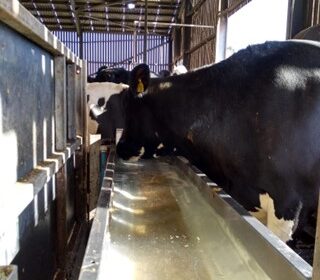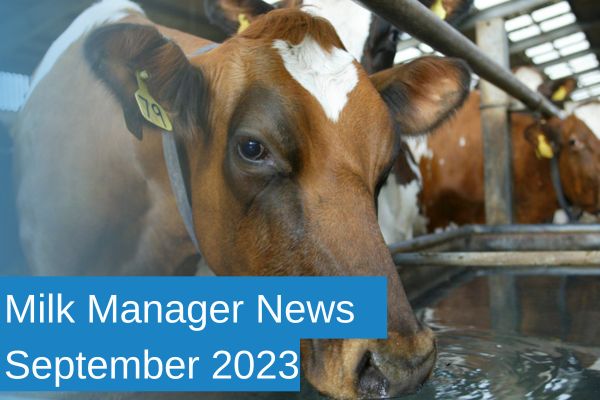MMN September 2023 – Water Quality: is it up to scratch?
11 September 2023We all know the importance of water to a dairy cow. High yielding cows can consume over 200 litres a day and so fresh, palatable water is essential to maintain performance and overall health.
Despite regular emptying and cleaning out of water troughs, they do get dirty very quickly from sediment and bacteria. The main source of contamination is from cattle dropping feed into the trough and faecal contamination. Mould growth can arise in water troughs from spoilt feed from cud balls, grass or other feeds that fall into troughs when cattle drink. This can affect the smell and taste of the water, reducing consumption which in turn can reduce milk output. On the odd occasion, moulds from these sources can cause sporadic abortions.
But what are the other risks from unclean water? In the warm summer months, under the right conditions, blue-green algae can form in outdoor troughs and significantly impact health, with their toxic compounds affecting the liver and nervous system. However, there are also disease risks from indoor troughs during the housing period.
The bacteria Bacillus licheniformis is often found in water troughs and is one of the main causes of abortion in housed spring-calving suckler herds fed on clamp silage in the last two months of pregnancy. Abortions caused by this bacterium tend to be less prevalent in dairy herds but is still a risk. Testing by SRUC Veterinary Services has found levels of up to 5 million cfu of B. licheniformis per gram in debris from the bottom of water troughs. Contaminated water can also allow the spread of other diseases such as Johne’s, E. coli, leptospirosis and bovine TB.

High levels of bacteria will also be found in biofilms. A biofilm is like a slime, produced by the bacteria that coat the insides of troughs and pipes. These biofilms build up with time and consist of nutrients such as sugars and proteins, creating an ideal habitat for potentially disease-causing bacteria to thrive.
Microbiology testing of water for E. coli and total coliform bacteria can be carried out. Ideally, these bacteria should not be present in livestock drinking water and bacterial counts should not be greater than 200/100ml for E. coli and 5000/100ml for coliforms (Source: Cawood laboratories).
Water contamination and disease risk is much greater where farmers are trying to reduce mains water usage with either borehole, stream or rainwater sources. If not using mains water, test borehole water annually, as well as having the pump serviced. Ultraviolet filters do not work effectively on murky water and a particulate filter will be required to remove any sediment before ultraviolet treatment.
Remember that water contamination might not necessarily be visible if from unsuitable pH, minerals or heavy metals. Palatability is affected by high levels of manganese and iron and these minerals can also increase the amount of oxidative stress on the cows, making them more susceptible to mastitis, higher cell counts or retained placenta on the back of a weakened immune system.
Tests for water cleanliness should include analysis for pH, nitrates, sulphates and TDS - total dissolved solids (inorganic contaminants). Other minerals can also be tested for.
Guidance on water quality
| What to test for | Target range |
| pH | 6.0-9.0 |
| Nitrates | < 20ppm |
| Sulphates | <1000ppm for adult cattle <400for calves |
| Total dissolved solids | Ideally <1000ppm but up to 3000ppm is regarded as safe |
lorna.macpherson@sac.co.uk; 07760 990901
Sign up to the FAS newsletter
Receive updates on news, events and publications from Scotland’s Farm Advisory Service

